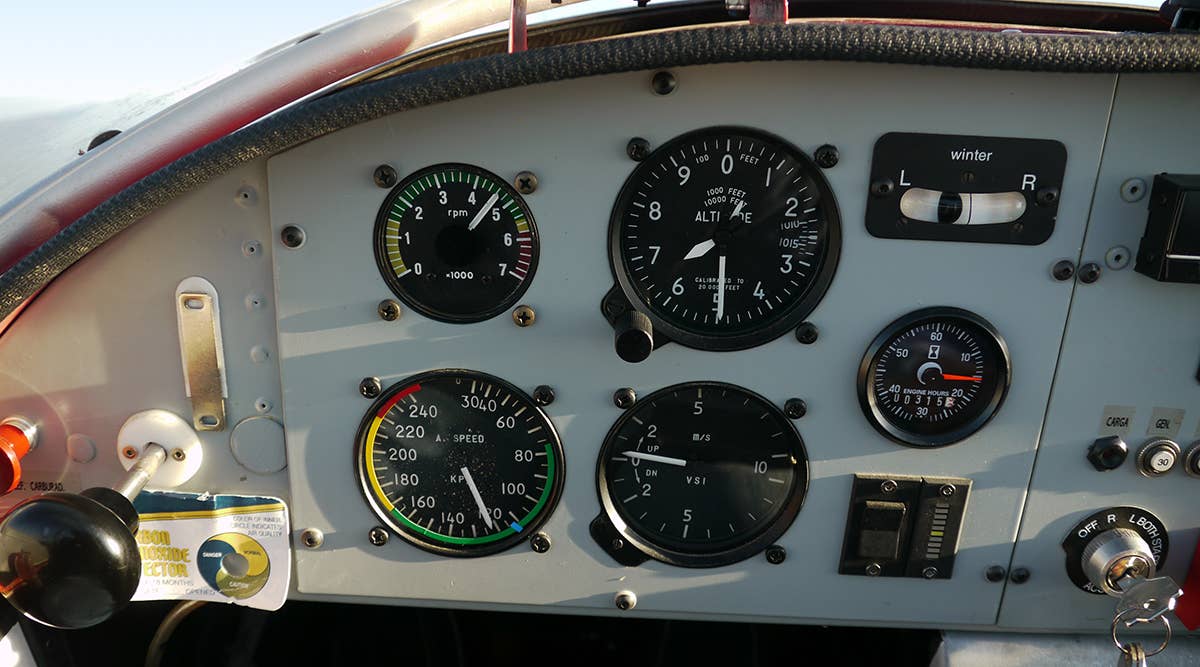NTSB to FAA: Make Interactive Carbon Monoxide Detectors Mandatory
Aviation advocacy groups also called upon to encourage CO detectors with auditory warning.

You can see an example of the older, non-interactive carbon monoxide indicators in the lower left of this photo. [File Photo: Adobe Stock]
The National Transportation Safety Board (NTSB) is urging the Federal Aviation Administration (FAA) to make interactive carbon monoxide detectors a requirement in general aviation aircraft.
These interactive CO detectors would provide both an auditory and visual warning when CO is present.
How common is CO poisoning?
You learn about the dangers of carbon monoxide poisoning as a student pilot. This odorless, colorless, and tasteless gas is a byproduct of combustion—and it is deadly.
According to the NTSB, "Between 1982 and 2020 there were 31 accidents attributed to CO poisoning.
Twenty-three of those accidents were fatal, killing 42 people and seriously injuring four more."
The incidence of CO poisoning is more frequent in the winter as cabin heat is used more than it is other times of the year. In many GA aircraft, cabin heat is produced by ducting outside air flow over the exhaust manifold to warm it, then opening a mechanical door to the cabin to bring the warm air inside. If there’s a crack in the manifold or duct work, carbon monoxide can enter the cabin.
One of the first signs of CO poisoning is sleepiness. Other symptoms include a headache, dizziness, nausea, shortness of breath, weakness, and confusion. As these symptoms can be attributed to other causes—such as a cardiac event or dehydration—the pilot can become incapacitated before they realize what is happening.
Carbon Monoxide Detection
There are many carbon monoxide detectors on the market. Among them are one-time-use, cardboard, easy-to-install devices that cost less than $10. These devices attach to the instrument panel or sidewall with adhesive.
The device uses a chemically activated sensor that darkens when carbon monoxide is present.
In theory, the pilot would notice the color change, shut off the cabin heat, open the vents to get fresh air, and land the aircraft as soon as possible.
However, sometimes the pilot doesn’t notice the color change.
The interactive CO detectors that the NTSB pushes for have both an auditory alarm as well as a light to warn the pilot. These units are often battery powered and are reusable. They are more expensive than the one-time-use devices. Cost can range from about $40 to upward of $100. They’re available at pilot supply stores, and they’re also easy to install or use as a portable device.
The NTSB is asking the Aircraft Owners and Pilots Association (AOPA) along with the Experimental Aircraft Association (EAA) to reach out to their membership about the dangers of CO poisoning and to encourage them to invest in the interactive CO detectors, while making inspection of the aircraft exhaust system a priority during maintenance.

Subscribe to Our Newsletter
Get the latest FLYING stories delivered directly to your inbox






